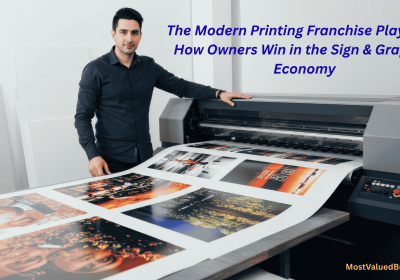What Is The Point Of Purchase Marketing? Types Of POP And Its Benefits
One of the smartest ways for retailers or retail store marketers to boost retail sales is through point of purchase. Point of purchase, as a marketing initiative, resonates a lot with that proverb – “strike while the iron is still hot.”
How?
It is a way of taking advantage of a location or a situation where the customer decides to purchase. A retailer or a marketer places the promotional material beside the merchandise to stimulate the customer’s buying intent – leading to sales growth.
One can also simplify it by taking advantage of impulse purchases. However, it is a lot more than that and is an important part of a retail store’s marketing initiative. Read this article to learn more about what the point of purchase is.
What Is The Point Of Purchase?

Point of purchase is all about a location where the consumer is about to make a purchase. These locations are largely in retail stores. Retailers or marketers use these locations to promote specific business products and stimulate customers’ buying intent. For a point of purchase to be successful, the promotional material must be placed strategically.
Here are some simpler examples –
- Product displays are placed at the store aisles inside a grocery store.
- Product advertisements through weekly flyers.
- Promotional activities and discounts or promotional posters placed around the product on sale.
For example, gummies, socks, lip balms, and similar smaller items are usually placed at the checkout point of a retail store. Retailers and marketers intend to boost the customers’ purchasing intent by placing them in these areas. POP, as a marketing initiative, starts brand interaction with the customers and boosts sales through a better in-store experience.
Read More: What Is Perceived Value? Different Types Of Perceived Value
Who Is the Point Of Purchase For?
Both the vendors and the retailers commonly use point-of-purchase marketing strategies. Usually, the vendors provide the retailers with the POP strategies and materials. Then, the retailers use them. Vendors usually intend to catch their customers’ attention through the POP marketing elements.
Common Types Of Point Of Purchase Advertising Displays
Here are some of the common examples of POP and how they are used in the retail stores –
Temporary Displays
Temporary displays are the promotional materials best used for seasonal promotions for discounts and offers. Retailers and marketers usually use the temporary POP displays for a few weeks or a month.
Semi-Permanent Displays
Semi-permanent displays are also called off-shelf displays. Marketers and retailers use these displays for around three months to a year.
Permanent Displays
Permanent displays are not very common. But, these displays can last for a year or more.
Signage
Signage is by far the most attractive point of purchase marketing display from a customer’s point of view. These retailers or marketers use signs to draw their customers’ attention. Some examples of the same could be a sticker, a sign on the shelf, or a hand display.
Vendor Shop
Retail stores often set up a vendor shop to display products from a specific brand for marketing. It is one of the most elaborate methods for boosting sales through POP. Setting up a vendor shop also helps a brand stand out in the crowd.
Benefits Of POP: Why Do Retailers Use POP Advertising?
Here are some common advantages of using point-of-purchase marketing –
Strategically Located
Retailers can set up POP displays in the high-traffic areas inside the stores. Buyers often look for certain products in a store and would gather in those specific areas. Retailers can strategically set up free-standing shelves or POP marketing displays to attract buyers towards the products. Sometimes, they would set up these displays in nontraditional locations as well.
Targeting Impulse Buyers
Customers usually visit the retail store when they have something in mind they want to buy. Through point of purchase, a retailer can invite the buyers to add more things to their shopping cart. Also, the point of purchase stimulates the buyers to buy things they buy impulsively. Although they might not be in the store to purchase certain items, the placement of those products close to the checkout point can stimulate impulsive purchases.
Cost Effective For Brands
Brands have an easier alley for communicating with the customer. Setting up some simple signs, posters, or cardboard does not cost. Point-of-purchase displays are cost-effective and can easily help a brand generate awareness or even boost its sales by targeting impulse buyers.
Display Elaborate Brand Message
A brand would always want to send its brand message to a wide variety of customers and audiences. Thanks to the point of purchase, they have a chance to grab the audience’s attention at the retail stores. The product packages may have limited space for adding your promotional materials. Thanks to the POP displays, brands can extend those limited spaces and convey their messages. Brands can display the unique features and use cases of their products through POP.
POP Helps With Merchandising
Retailers are often limited by the physical space and their understanding of specific brands when it comes to merchandising. They are also short on time to dedicate to the process. However, brands can ensure that the retailers are effectively merchandising those products and putting them on display for effective in-store promotion.
Common POP Advertising Techniques
POP or point of purchase does not always have to be expensive. Brands can run a POP campaign through simple stickers on the shelf. They can also pile up the products for a display with the vendor’s branding on them. These are common POP tactics that work well and cost less at the same time.
The key to POP is through the vibrant and explicit display of the products or the marketing posters. Some common strategies marketers often use are –
- Retailers can promote the benefits customers might be expecting from a product on display.
- Marketers can study the customers’ necessities and promote those points through POP.
- Understanding the competitors and doing what works well for the brand is another POP strategy brands usually follow.
Read More: What Is Online To Offline Commerce? What Are The Benefits Of O2O Commerce?
Final Words
POP or point of purchase as a marketing strategy can be effective for vendors and retailers trying to boost sales. However, the different types of POP displays must be used in strategic ways to get them to work in the retailers’ favor. Once you have gone through this article, you will understand what POP means and the common strategies brands use for POP marketing.
Let us know if this article helped you find the information you were looking for. You can also share your feedback through the comment section.
Read Also:



